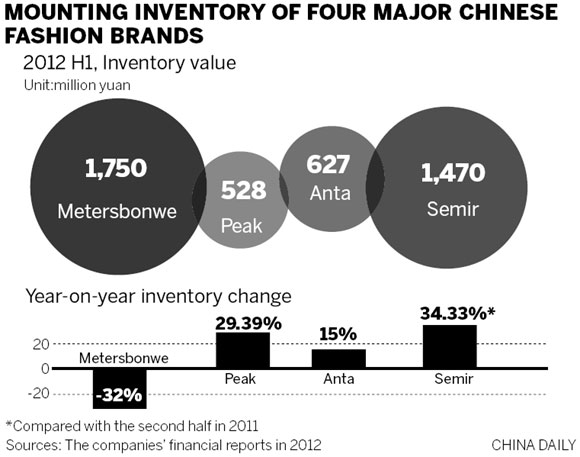China's overall retail sales by value rose 13.8 percent in May compared with a year earlier. Stripping out the distortions to the January and February data caused by the Lunar New Year, the figure for May represented the weakest growth in monthly retail sales since 2006.
"I have not made any profit this year because the number of customers fell sharply by around one-third," said a garment store owner surnamed Si in Beijing. "I have to reduce ordering to prevent loses."
Despite some brands losing profit, some international apparel giants are doing well.
The Spanish fast fashion giant, Zara, is famous for its low inventory and efficient management system. The company uses the latest information technology when introducing new fashion products to collect data from its 1,855 stores globally to detect trends and be able to respond with precision to customer preferences.
Every piece of Zara clothing is in limited supply in each individual Zara store and Zara removes unsold clothes after just a few weeks, contributing toward brand exclusivity.
At its Spanish headquarters in La Coruna, Zara's market specialists, procurement personnel and salespeople all sit next to each other, allowing the process from initial sketch through design to dispatch to be highly efficient. Zara can take a design from the drawing board to stores in only two to three weeks. This enables them to quickly capture new catwalk trends and keep low stock.
Germany-based Adidas has been doing well over the past years at reducing inventory. The world's No 2 sports wear giant started to focus more on "sell-in (sold to dealers)" models instead of the former "sell-through (sold to end consumers)" practice.
Adidas made a contract with distributors that a certain number and proportion of its latest products must be sold within three months. After three months, unsold products will be moved to factory stores or outlets to reduce stock.
In addition, Adidas collects sell-through data and trend analysis across the country, which greatly helps them to quickly understand different demands in different areas. Then, based on the data and analysis, the company provides recommendations on regional characteristics, including the procurement of goods and nature of store displays.
"In order to cut back on stock, garment producers have to control production, reduce product homogeneity and reduce density of distribution channels," said Ma Gang, an apparel and footwear analyst.
"Apparel inventory may go to outlet stores as well as lower-tier cities for sale in order to reduce inventory," said Steven Li of Lunar Capital Management. "For sports goods, they also can try promotional campaigns by taking advantage of some big sporting events."
Li added that building-up medium and high-end brands will likely be less affected by inventory issues. "We are determined to develop Li Ning into a world-class sports brand, a brand that is fundamentally anchored on sports values," said Li Ning.
Liwoke@chinadaily.com.cn

